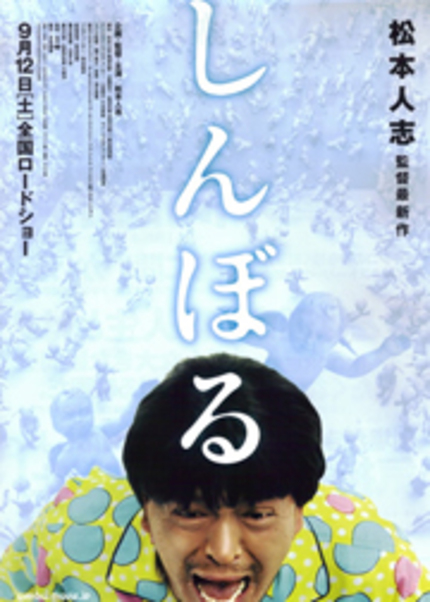Fantasia 2010: SYMBOL Review

Dai Nipponjin director Hitoshi Matsumoto, take a big step forward toward the front of the class. Sophomore effort Symbol is not just a worthy follow up to the lunacy of your debut but also a major progression in every way - smart, impeccably crafted and, most importantly, very funny. If Dai Nipponjin announced the arrival of a significant and unique talent on to the international scene then Symbol represents the maturation of that talent, proof that the first effort was not just a fluke and that Matsumoto will be a talent to reckon with for decades to come.
A film that plays like a candy coated, Japanese game show version of a Franz Kafka short story, Symbol is wildly resistant to review and discussion without veering into major spoiler territory but is far too striking to not make the attempt. The film revolves around two parallel plot lines. In one an unnamed man - played by Matsumoto himself - awakes in a blank white room wearing only a pair of brightly colored pajamas. He doesn't know where he is. He doesn't know how he arrived. He doesn't know how to get out. But he will very quickly learn that that this place functions according to its own sense of bizarre logic, logic that he must puzzle out. In the second, a middle aged Mexican man sits at the breakfast table reading a newspaper while wearing a green wrestling mask. He is Escargot Man, a low level luchador, and it is the morning before his latest match one which his son will be attending after school.
That two such disparate story lines exist in the same movie at all is a sure sign that something odd is brewing, that they come together in such a resounding and satisfying way a sure proof of Matsumoto's skills. The two environments give the writer-director-star a chance to demonstrate how far his visual skills have developed since Dai Nipponjin, the messy verite approach of that first film replaced by clean precision in the white-room sequences and lush but realistic art direction in Mexico. Likewise, the content of the two stories gives Matsumoto the chance to show how he can handle different tones, the Mexican sections playing as a sort of portrait of talent in decline balanced against the hopes of the young while the white room plays with a sort of absurdist fervor, Matsumoto delivering one of the truly great physical comedy performances of the year.
But what does it all mean? Surprisingly, for such a very odd film, chances are you simply won't care what it means throughout at least the first three quarters of the picture. The execution is so clean, so engaging, so masterful that you are content to simply go along for the ride. But when the punchline comes and the two stories intersect it becomes clear that there really is a point to it all, that Matsumoto has something significant to say. What that really is can't be discussed without spoiling key moments of the film and will no doubt be the cause for spirited debate among the audience but this is absolutely not a mere exercise in style. There is some meat on these bones and it is tasty stuff indeed.

Do you feel this content is inappropriate or infringes upon your rights? Click here to report it, or see our DMCA policy.






